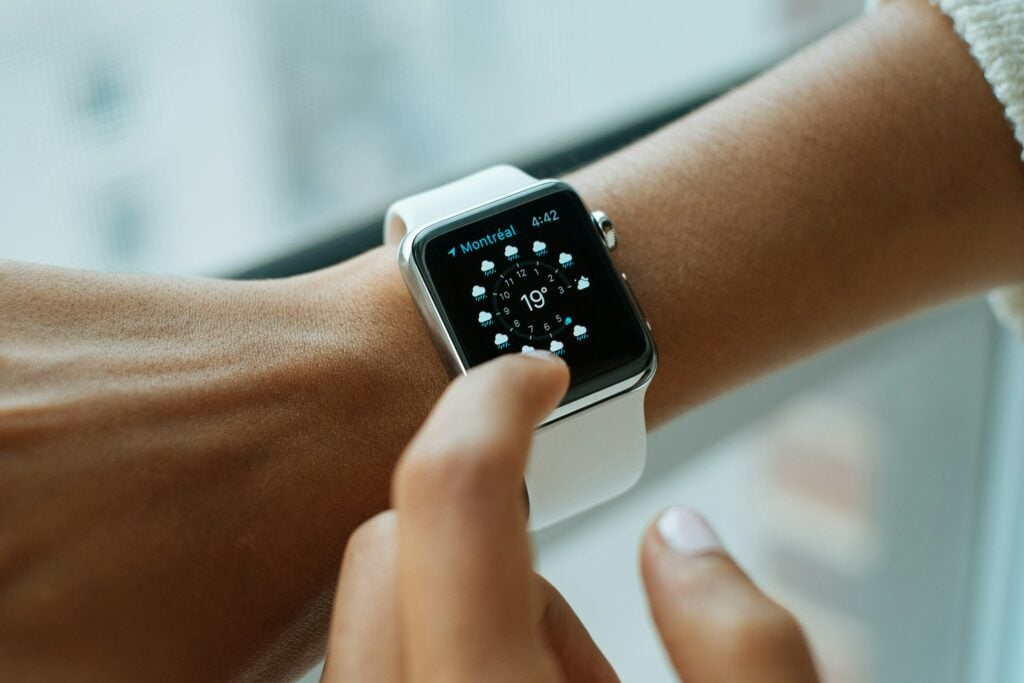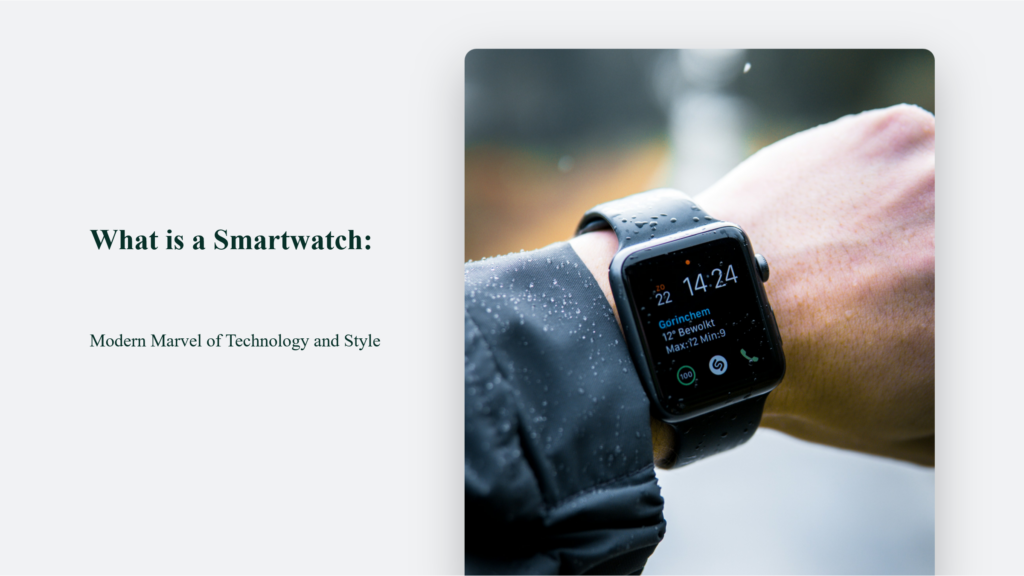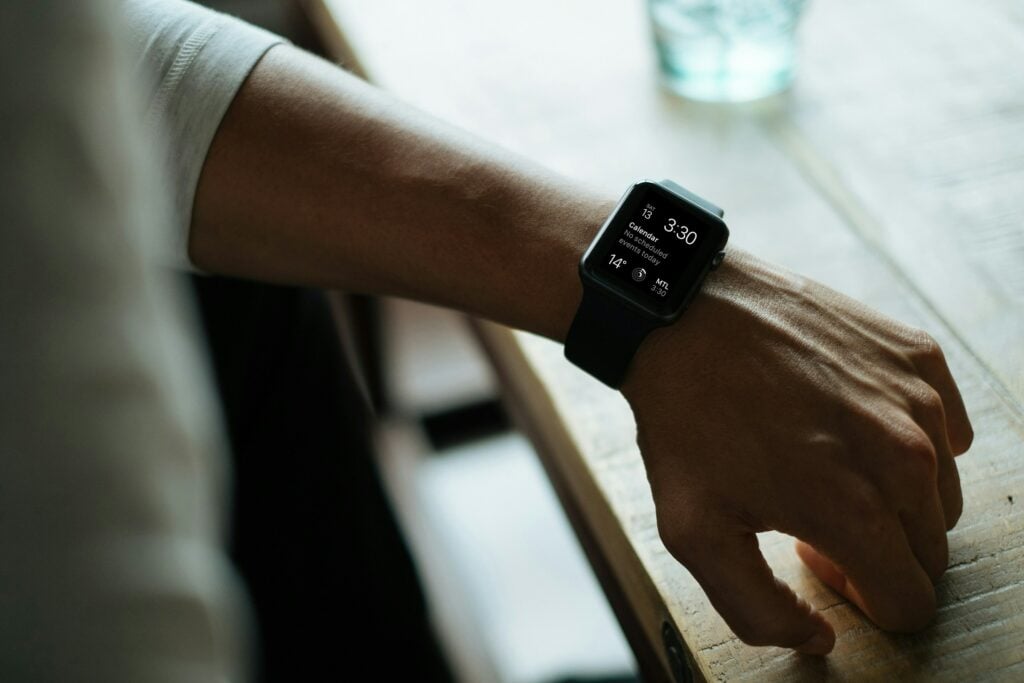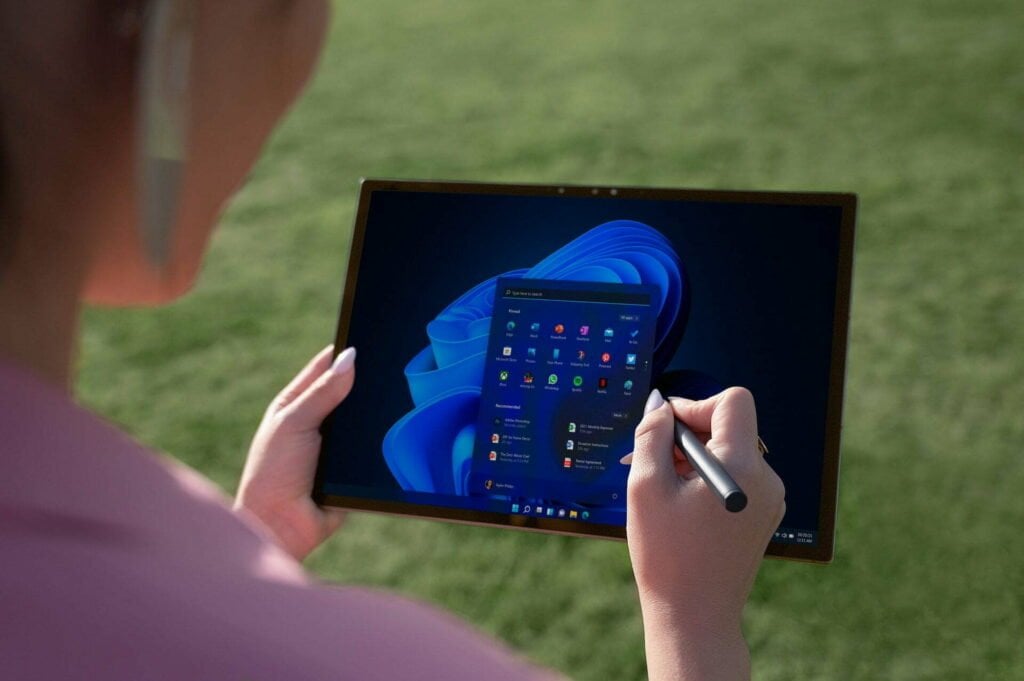

What is a Smartwatch: Modern Marvel of Technology and Style

As Seen On
Welcome to CJ&CO, a leading Gold Coast Digital Marketing Agency, where we delve into what is a smartwatch. These ingenious devices, a perfect blend of fashion and technology, have revolutionized how we interact with the digital world. From their historical origins to their current status as a staple in tech fashion, smartwatches are a marvel that deserves a closer look.

A Brief History of the Smartwatch
The history of the smartwatch is indeed a journey that mirrors a science fiction tale come to life, marked by significant milestones and technological innovations.
The Dawn of Digital Time: The 1970s to Early 1980s
The story begins in the early 1970s with the Hamilton Pulsar, one of the earliest digital watches. This period marks the first instance where technology enabled the miniaturization of computing power to a scale that could be worn on the wrist. However, these early models were primarily focused on digital timekeeping rather than the multi-functional capabilities we associate with smartwatches today.
The Seiko Innovations: Mid-1980s
A notable leap forward came in 1983 with the Seiko Data 2000. This watch was a trailblazer for integrating data and computing with timekeeping. It featured a wireless keyboard, allowing for data entry and storage, a significant advancement in wearable technology at the time. The Seiko Data 2000 marked the beginning of the transformation from digital watches to what we could start to recognize as early smartwatches.
The 1990s: Expansion and Experimentation
The 1990s saw an expansion in the concept and functionality of smartwatches. A key player was the Timex Datalink, which was introduced in 1994. This watch was groundbreaking as it was the first to offer wireless data transfer from a computer. Its capabilities included storing personal data and schedules, a precursor to the modern smartwatch’s app functionalities. Notably, the Timex Datalink was used by NASA astronauts, showcasing its reliability and advanced technology.
The 21st Century: Rise of the Modern Smartwatch
Fast forward to 2013, the smartwatch industry witnessed a transformative event with the launch of the Apple Watch. Apple’s entry into the market revolutionized the smartwatch concept, turning it into a mainstream device. The Apple Watch combined aesthetics with functionality, offering a sleek design and a host of features like fitness tracking, notifications, and even mobile payments. It set a new standard for what a smartwatch could be, blending style with a wide range of practical applications.
What Is a Smartwatch?
Imagine having a miniature computer on your wrist – that’s a smartwatch! It’s a digital timepiece that goes beyond mere timekeeping. With features like heart rate monitoring, activity tracking, and even phone calls and text messaging capabilities, smartwatches have redefined convenience. They typically pair with your smartphone, extending its functionalities to your wrist. However, certain models operate independently, offering features like GPS tracking and NFC payments.
The Versatility of Smartwatches
Smartwatches are not just about checking the time or reading messages. They are as versatile as they are innovative. Think of diving watches with depth and temperature indicators or aviation watches with GPS-powered maps. There are even Braille watches for the visually impaired! Popular models include the Apple Watch Series, Fitbit Sense, Garmin Vivoactive, and Samsung Galaxy Watch, each offering unique features catering to different needs.

Health and Fitness: A Core Feature
Health and fitness features are a core aspect of modern smartwatches, serving a significant role in healthcare and personal wellness. Smartwatches have evolved to support various health-related functions, including activity and behaviour monitoring, heart rate tracking, and potentially aiding seizure detection.
Their versatility in health monitoring extends across different study designs and geographic locations, encompassing a broad spectrum of participants within the healthcare system. The research on smartwatches in healthcare focuses on their development, implementation, evaluation, and comparative validation. These studies aim to understand how smartwatches can enhance user satisfaction, knowledge, skills, attitudes, and behaviours related to health and fitness.
Most of these studies are conducted in diverse locations, with a significant number in the USA, and cover various research designs like experimental, cohort studies, and randomized controlled trials. It highlights the global interest and varied applications of smartwatch technology in health monitoring and assistance. The studies generally assess the quality and effectiveness of smartwatch interventions in healthcare, indicating a growing trend of utilizing smartwatch technology for health and fitness purposes in everyday life.
Smartwatch Alternatives
While Apple leads the pack in smartwatch technology, numerous alternatives cater to different preferences and budgets. Brands like Motorola, Garmin, Fitbit, and Samsung offer competitive features, often at more affordable prices. Whether you’re an Android user or looking for a fitness-focused watch, there’s a smartwatch for everyone.
The Future of Smartwatches:
The future of smartwatches is shaping into an exciting blend of advanced health monitoring, enhanced AI integration, and overall technological innovation. Here’s a look at what we can expect:
Advanced Health Monitoring:
Future smartwatches are set to push the boundaries of health and medical monitoring. With cutting-edge sensors and software, these devices will be capable of detecting various medical conditions, such as irregular heart rhythms, diabetes, and early signs of other illnesses. For example, upcoming models like the Garmin Fenix 8 should include ECG and heart rate monitoring sensors, offering a comprehensive view of the user’s heart health.
AI Integration:
AI is set to play a pivotal role in the evolution of smartwatches, enhancing their capability to provide personalized health insights and recommendations. AI-powered apps like Cardiogram and HealthTrack are designed to analyze heart rate and sleep data, potentially identifying health issues. Other apps, like Sleep Cycle, leverage AI to analyze sleep patterns, helping users wake up during their lightest sleep phase. These advancements in AI algorithms will lead to more accurate health anomaly detection and reliable health insights.
Remote Patient Monitoring:
The synergy between AI and wearable technology is crucial in remote patient monitoring. This feature especially benefits individuals with chronic conditions, allowing healthcare professionals to access patient data remotely and intervene when necessary. This innovation reduces the need for frequent in-person visits, empowering patients to manage their health proactively.
Integration with Telemedicine:
AI-powered wearables are expected to integrate with telemedicine platforms, providing a comprehensive virtual healthcare experience. This integration allows doctors to monitor patient data remotely and adjust real-time treatment plans.
Data-Driven Healthcare:
The aggregate data collected from AI-powered wearables can contribute significantly to data-driven healthcare insights. This data can help researchers understand health trends, track disease outbreaks, and develop personalized treatment plans.
Privacy and Data Security:
As smartwatches collect sensitive health data, privacy and data security are paramount. Ensuring user data is encrypted, anonymized, and transmitted securely is crucial. Manufacturers and developers must adhere to robust privacy policies and comply with regulations to protect user rights.
Battery Life and Design:
Future smartwatches will likely improve battery life and design, making them even more user-friendly and versatile. For instance, upcoming models like the Amazfit GTR 4 are expected to offer long battery life and water resistance, enhancing their functionality and appeal.
Frequently Asked Questions:
Is it worth getting a smartwatch?
Absolutely, if you value convenience in managing notifications and tracking fitness.
Can you answer calls on a smartwatch?
Yes, most modern smartwatches allow you to take calls.
Conclusion
Smartwatches represent a remarkable fusion of technology and style, evolving from simple timepieces to sophisticated health and communication tools. They exemplify how technology can seamlessly integrate into our daily lives, making tasks simpler and keeping us connected in the most stylish way possible.
Embrace the world of smartwatches and experience the perfect blend of functionality and fashion on your wrist!
Konger
Up until working with Casey, we had only had poor to mediocre experiences outsourcing work to agencies. Casey & the team at CJ&CO are the exception to the rule.
Communication was beyond great, his understanding of our vision was phenomenal, and instead of needing babysitting like the other agencies we worked with, he was not only completely dependable but also gave us sound suggestions on how to get better results, at the risk of us not needing him for the initial job we requested (absolute gem).
This has truly been the first time we worked with someone outside of our business that quickly grasped our vision, and that I could completely forget about and would still deliver above expectations.
I honestly can't wait to work in many more projects together!
Disclaimer
*The information this blog provides is for general informational purposes only and is not intended as financial or professional advice. The information may not reflect current developments and may be changed or updated without notice. Any opinions expressed on this blog are the author’s own and do not necessarily reflect the views of the author’s employer or any other organization. You should not act or rely on any information contained in this blog without first seeking the advice of a professional. No representation or warranty, express or implied, is made as to the accuracy or completeness of the information contained in this blog. The author and affiliated parties assume no liability for any errors or omissions.

